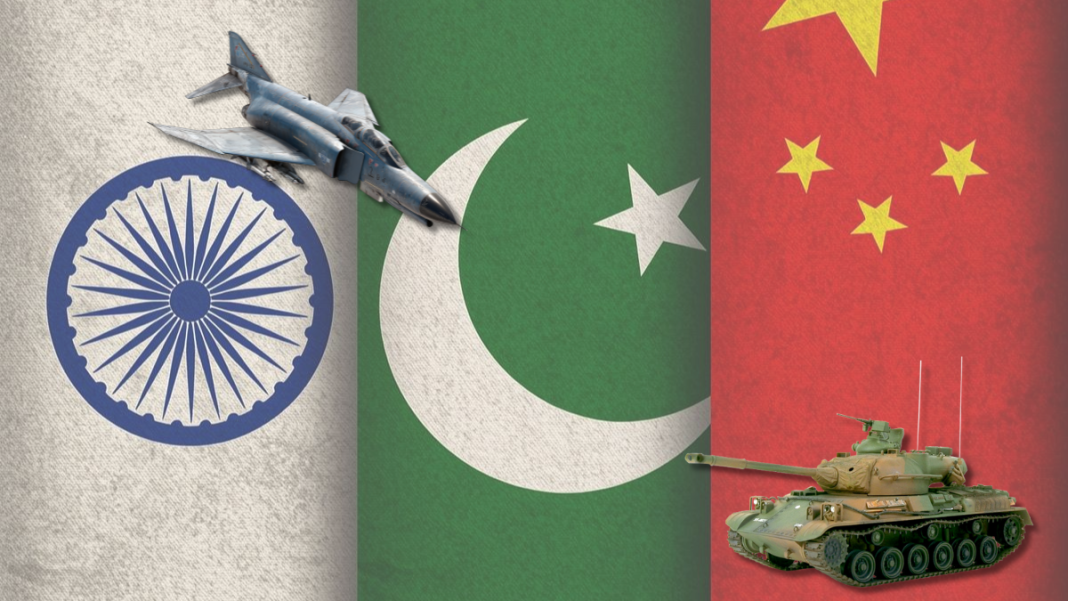A new report from a bipartisan commission in the United States has made a striking claim about China’s actions during the short but tense India-Pakistan conflict earlier this year. According to the report, China used the clash as a chance to conduct weapons testing and observe how its advanced systems performed in real-time combat-like conditions.
China’s Alleged Weapons Testing During India-Pakistan Clash
The US-China Economic and Security Review Commission explained that Beijing “opportunistically used” the crisis to evaluate its military technology. The report says the four-day confrontation gave China an opening to gather important data while it tested its newest weapons supplied to Pakistan.
China carried out these tests during active firing situations, which regular training exercises cannot perfectly simulate. The commission says this period allowed China to see how its systems responded under pressure, how quickly they locked onto targets, and how effective they were against real threats.
The report also says Chinese officials later highlighted this performance publicly, using the results of the testing to promote the capabilities of their defence systems. This helped China position itself as a strong competitor in the global arms market at a time when many countries are looking to upgrade their military equipment.
China has strongly rejected the claims and said the report is biased. However, the allegations have gained wide attention because they show how conflicts can become opportunities for military testing.
New Chinese Weapons Tested in Real Combat-Like Conditions
The commission pointed out that several modern Chinese weapons were used in this confrontation for the first time. According to the report, this real-world testing involved:
- HQ-9 air defence system, built to detect and shoot down aircraft
- PL-15 air-to-air missiles, designed for long-range air combat
- J-10 fighter aircraft, one of China’s key multirole jets
The report says China tested its new systems in a real high-pressure environment for the first time, giving Beijing a chance to study details like reaction speed, accuracy, and tracking that normal training cannot show. Chinese officials later highlighted these results to promote their weapons, presenting the testing as proof that the systems had performed well during an actual conflict.
FATF Slams Pakistan Over Hidden Missile Shipments – Will India Push for Greylisting?
The commission also pointed to concerns about online activity linked to China. It claims fake accounts shared AI-generated and video-game images showing supposed aircraft wreckage to make the systems appear more successful than they were, aiming to influence potential defence buyers.
The report further notes that Chinese representatives encouraged a Southeast Asian country to pause an ongoing fighter jet purchase. According to the commission, China used the results of the weapons testing during the India-Pakistan crisis as a selling point to push its own military equipment and strengthen its position in the defence market.
China-Pakistan Defence Ties and Regional Testing Impact
China and Pakistan share a long-standing defence relationship, and the report shows how deep the partnership has become. Between 2019 and 2023, China made up nearly 82% of Pakistan’s total defence imports. These included aircraft, missile systems, drones, and naval equipment.
The commission says that the strong defence relationship gave China the opportunity to see how its systems behaved during real operations. Pakistan’s use of Chinese systems during the clash allowed Beijing to gather data without being directly involved in the fighting. This made the testing easier to observe and analyse.
The report adds that military cooperation between the two countries has increased over recent years. Joint exercises, technology exchanges, and operational coordination have all expanded. This growing cooperation has made Pakistan a major testing ground for many Chinese defence systems.
The alleged weapons testing during the India-Pakistan conflict also helped China push its defence sales to other countries, the report says. By showing that Pakistan had used its systems in real-world conditions, China attempted to boost trust in its technology.
China has denied all allegations and has criticised the commission for making what it calls baseless claims. According to Beijing, the report shows political bias rather than objective analysis.
However, the findings continue to draw attention because they show how countries can test modern weapons during regional conflicts and later use those results to influence defence markets worldwide.

